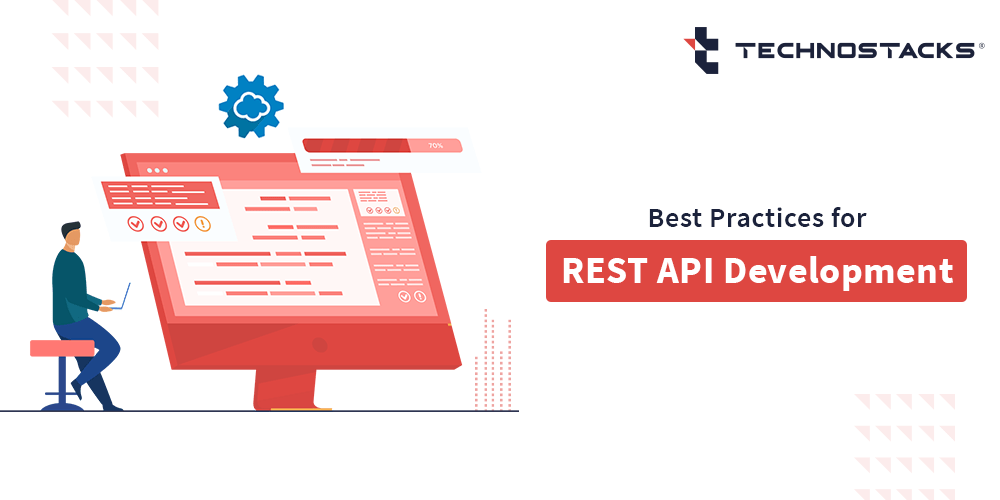Best Practices for REST API Development
An API is a bunch of rules that determine how applications or devices communicate and connect. Tech monsters like Facebook, GitHub, and Netflix are the heads of this show as they are employing designers with great enthusiasm to take advantage of their information by utilizing APIs.
Since APIs assist engineers with speaking with the information, they become more agreeable and straightforward for designers. Nonetheless, composed REST APIs should be all-around planned; else, they can cause numerous troubles for engineers rather than upgrading the client experience. Therefore best practices for the REST API development process should be followed regarding obliging your customers with the most productivity.
What is REST API?
It is an application programming point of interaction. Ordinarily, the HTTPS communication protocol accesses the Restful application programming connection point. It’s otherwise called RESTful API.
Features of REST API
Before diving into the prescribed procedures for the RESTful API configuration, we should initially get familiar with the Features of REST API:
- Easy to View and Read
Developers can undoubtedly and efficiently work with a definitively designed API as it is not difficult to peruse. They can recall its connected capacities and assets while managing it continually. - Hard to Misuse
You can relatively lessen the potential outcomes of composing code incorrectly, assuming that you execute and coordinate your API with a sharp and clean design. Likewise, it gives critical input without ordering extreme directions from the end client. - Outright and to the Point
A specific API assists software developers with making potential applications against the information danger uncovered by you. Subsequently, numerous API developers don’t rush to finish the entire venture but rather make use of the current APIs.
[call_to_action title=”You want to develop an API For your business?” subline=”Take the first step towards your business growth” button_text=”Click here to start now” utm_source=”blog+cta” utm_medium=”blog+page” utm_campaign=”rest-api-development” theme=”red”]
Best 10 Common practices for REST API Development
To make your API client’s life straightforward and exact, you should probably follow the best practices to design REST APIs and development practices. Here are a few demonstrated strategies to follow while designing and creating REST APIs:
- Clear and Concise Documentation
You should have complete and clear API documentation. As a rule, documentation is created naturally, relying upon the API definition. Any other way, you should guarantee that the documentation can be seen effectively by individuals with less or no experience.You want total documentation to assist clients with learning security, confirmation, and mistakes on the board. Also, it gives drawing in instructional exercises, guides, and simple-to-utilize assets. Far-reaching documentation simplifies it for clients to utilize your API.Read More:- Guide on Web Application Architecture - Utilizing JSON as a Data Format
It is the most generally used information design, even though you can send information in different organizations like XML, CSV, and HTML. JSON linguistic structure can make information simple to pursue for people. It is not difficult to utilize and offers speedy and straightforward information evaluation and execution. Additionally, it contains a broad exhibit of upheld program similarity. - API Versioning
This practice empowers developers to make changes, specific activities, or the information structure. You might manage more than one API form, assuming that your venture increments with time and in size. In any case, the advantage is that this empowers developers to make more improvements and changes in their administration by holding a piece of API clients that are delayed in tolerating new differences or not prepared to change.We observe blended input on whether we should remember an API variant for the URL or a header. Scholastically, it ought to be set in the header. However, the variant should be available in the REST API URL. This ensures the program’s inquiry across various variants, offering a consistent and straightforward experience of development.An API is normally temperamental and variable also. Although you can’t stay away from the change, you should look at the methods of managing the transition. Planning a very much archived and proclaimed devaluation consistently is an incredible practice for many APIs. - Error Management
Blunders ought to be adroitly figured out how to diminish disarray for each API user. This profits the HTTP reaction codes that clarify the idea of the error that happened. The API maintainers get abundant information from it to evaluate the source and explanation for the issue.To keep your framework blunder-free, leave them unmanaged. Henceforth, the API client needs to manage blunders. Here are some essential blunder HTTP status codes:- 404 Not Found – This implies that there are no assets.
- 403 Forbidden – This infers that an inappropriate client has no authorization to utilize an asset regardless of whether they get checked.
- 401 Unauthorized – This implies that the client isn’t approved to utilize an asset. It returns if a client doesn’t get checked for the most part.
- 400 Bad Requests – This suggests that the customer side info has been ineffective in documentation or approval.
- 503 Service Unavailable – This denotes that something extra and startling activity happened on the server-side; for instance, framework disappointment, part disappointment, server over-burden, and so forth
- 502 Bad Gateway – This signifies an invalid or invalid reaction from a vital server.
- 500 Internal Server Error – It’s an essential server blunder.
- Enhancing API Security
Utilizing present security systems like TLS and SSL is one more extraordinary practice for making APIs. SSL declarations can connect safely by offering a private and public key. Without this encoded connection, you can’t get an affirmation that you are defending delicate information like financial or clinical data appropriately.TLS is SSL’s most present-day form that gives further developed security and assurance. Ordinary testing is one of the fundamental API security best practices. You can utilize these two vital tests:- Penetration Testing – This test chooses the openness of APIs to a genuine digital assault. The analyzer searches for susceptibilities that the programmers may abuse.
- Fluff Testing – This test is valuable for checking how APIs react to the pointless or invalid contribution for tracking down blunders or blemishes in the code.
At last, rate restricting can undoubtedly forestall DoS (Denial of Service) assaults where unnecessary solicitations ruin an API’s fundamental usefulness. Restricting the number of solicitations per client for quite a while can shield your API from such assaults.
- Allowing Data Sorting, Filtering, Paging, and Field Selection
It’s difficult to deal with monstrous information bases. Recovering only the requested information without exhibiting the entire data set is quite possibly the most difficult perspective for ensuring a safe connection with Apus. You should involve a channel to return the information that meets the solicitation.In addition, it saves monstrous transfer speed size on the customer side. With the development of your data set, the need for information channels also becomes more fundamental. REST API gives an assortment of separating choices:- Filtering – This aide check results utilizing specific hunt boundaries like country, creation information, and so forth
- Sorting – This empowers you to figure out the rising or plummeting design outcomes utilizing your picked boundary-like dates.
- Field Selection – This attainable REST API development work empowers developers to request simply specific available information for a particular item. Accordingly, assuming that the article you mention has loads of fields like name, last name, birth date, telephone number, and email ID, you need a couple of ones, essentially use field choice for referencing the ones you want to add to the reaction.
Paging – Use ‘limit’ to look at the outcomes in a specific number. In addition, it involves ‘offset’ for educating what segment regarding the entire outcome is displayed.
- Optimizing for Human Readers
As referenced above, APIs should be straightforward and used. Aside from utilizing JSON, you can utilize another thing to make APIs simple to utilize and comprehend:- Use clear and simple naming frameworks with no truncation.
- Use things rather than action words in HTTP techniques.
- Have simple to-comprehended and basic depictions of executives making mistakes, alongside normalized blunder codes.
- Use plural things for assortments as indicated by the acknowledged standards.
- Keeping Resource Nesting Limited
Asset settling helps pair two capacities that share a comparable order or are related to one another. For instance, if you think about a web-based store, ‘requests’ and ‘users’ are assets under a comparative classification.Settling is a viable practice for the applicable blending of assets. Be that as it may, numerous developers abuse it, which decreases its allure.Additionally, it produces complex conditions that an essential designer or client can’t see as expected. Accordingly, utilizing your asset settling is perhaps the best practice for REST API development. - Exploiting Safe Methods
A few safe strategies are HTTP techniques that restore the exact asset portrayal. HEAD, GET, OPTIONS, and TRACE procedures are viewed as protected. This infers that they can typically recover information without changing an asset’s condition on the server. Besides, abstain from involving GET for deleting content.Normally, you can execute these techniques, yet issues emerge when the HTTP detail gets disregarded, issues emerge. Consequently, use HTTP strategies as indicated by the activity you should complete. - Caching Data in Frontend
Use storing rather than requesting information a few times. The advantage of reserving is that users can get information rapidly. Be that as it may, the users might get obsolete information too. Additionally, this might cause issues while fixing underway conditions on the off chance that something wrong happens as we see obsolete information continually.
[call_to_action title=”Have an app idea? Let’s discuss” subline=”Take the first step towards your business growth” button_text=”Click here to book your free consultation” utm_source=”blog+cta” utm_medium=”blog+page” utm_campaign=”rest-api-development” theme=”red”]
FAQs about REST API Development
- What is REST API vs. RESTful API?
As far as APIs, there are no contrasts between REST and RESTful. REST has a bunch of limitations. RESTful alludes to an API that follows those requirements. - How do you secure REST API best practices?
Industry-standard validation protocols assist with decreasing the work of getting your API. Custom security protocols can be utilized, yet just under quite certain conditions.Custom API validation protocols should be kept away from except if you know what you are doing and completely see every one of the complexities of advanced cryptographic marks. Most associations don’t have this mastery, so we suggest OAuth1.0a as a strong other option.Regardless of whether you will take this possibly unsafe street, there is one more motivation to keep away from it: since it is custom, nobody other than you will want to utilize it without any problem. Possibly utilize custom verification protocols assuming that you will uphold customer libraries you can provide for your REST API guests so your clients can utilize these protocols with next to zero exertion. If not, the API will be overlooked. - What is the difference between API and Web services?
A web service is an organization-based asset that plays out a particular undertaking, though an API is a connection point that empowers you to construct programming that cooperates with a current application. We can say that all web administrations are APIs, yet not all are web administrations. - How do I improve my REST API performance?
Here are some tips to improve your API’s performance.- Cache Requests
Reserving is perhaps the most effective way to develop API execution further. Assuming you have demands that often produce a similar reaction, a reserved variant evades over-the-top data set questions. The most straightforward method for reserving reactions is to intermittently terminate or compel them to lapse when certain information refreshes occur. - Prevent Abuse
You’re likely mindful of circulated forswearing of administration (DDoS) assaults. However, there are undeniably more instances of incidental maltreatment. The most effective way to avoid these issues is to carry out a rate-restricting methodology. By estimating the number of exchanges each second, per IP address, or token (assuming every customer is approved before getting to the API), you can remove API customers that make over-the-top demands and forestall DDoS-like log jams from accidentals. - Use PATCH
Numerous developers accept PUT and PATCH are similar strategies, yet truly, the two of them update an asset in various ways. PUT demands alter an asset by sending updates to the whole asset, while PATCH applies a fractional update. The last option has a more modest payload that can further develop execution now and again. - Limit Payloads
Most APIs don’t have exceptionally huge payloads; however, there are a few exemptions for the standard. For instance, an investigation organization might have to return a year of information. These huge payloads can consume a large chunk of the day to make on the server and surprisingly longer to download on a customer, which implies that they’re generally best moved in a compacted design. - Quicker Network
Slow organizations sway the presentation of even the best REST API design practices. Much more terrible, problematic organizations can cause out and out personal time that could make you abuse terms of administration or different guarantees made to your API customers. It’s generally smart to put resources into the right foundation so you can keep up with the right degree of execution.
- Cache Requests
- What are the major benefits of REST API?
- Simple to coordinate
A fair RESTful API might be found from the absolute first URI. It is not necessarily the case that every application that utilizes your administration will know what to do naturally. It does, be that as it may, make things more straightforward for the designer who is endeavoring to connect your API. - Utilization of HTTP
The utilization of universal principles is one more trademark for simplicity of coordination that has to do with REST over HTTP (THE most famous execution of REST). Discussing HTTP, the web’s protocol, and yielding JSON or ATOMPub implies observing a library that can connect to you in any language, and the stage is a lot more straightforward. - Versatility
Stateless communication and a recreated vault give a significant degree of Versatility. With the REST APIs, increasing a current site is more straightforward when contrasted and something like SOAP. - Freedom
On account of the detachment between customer and server, the REST protocol considers independent development across a few venture segments. Besides, the REST API is versatile to functional grammar and stage. This permits testing in an assortment of settings all through development. - Uniform Interface
While making a REST API, developers consent to observe similar guidelines. Subsequently, the result is a steady point of interaction across all APIs. This connection point capacity is an agreement between the customer and the assistance, and all REST APIs share it. How could this be valuable? When developers use APIs, they require worldwide plans to guarantee that they can communicate with each other. - Layered System
Each REST-empowered part has no admittance to parts other than the one with whom it is imparting. This implies that a customer who connects to a delegated part doesn’t know with whom that part will connect later. This urges developers to design separate parts that are not difficult to redesign.
- Simple to coordinate
- What are the approaches to developing a REST API?
REST depends on a solitary application protocol (HTTP), general asset pointers (URI), and normalized information designs through XML. It utilizes to set up HTTP techniques, for example, GET and POST, to coordinate applications. - How would you structure a REST API?
Mentioned below are the two REST API structures.-
- REST request structureAny REST request incorporates four fundamental parts: an HTTP strategy, an endpoint, headers, and a body. An HTTP strategy depicts how it is to be managed as an asset. There are four essential techniques additionally named CRUD activities:
- GET to retrieve a resource,
- POST to create a resource,
- DELETE to delete a resource, and
- PUT to update a resource.
- REST request structureAny REST request incorporates four fundamental parts: an HTTP strategy, an endpoint, headers, and a body. An HTTP strategy depicts how it is to be managed as an asset. There are four essential techniques additionally named CRUD activities:
An endpoint contains a Uniform Resource Identifier (URI) demonstrating where and how to track down the asset on the Internet. The most well-known URI is a Unique Resource Location (URL), filling in as a total web address.
Headers store data pertinent to both the customer and server. Primarily, headers give verification information —, for example, an API key, the name or IP address of the PC where the server is introduced, and the data about the responsive design.
A body is utilized to pass on extra data to the server. For example, it very well might be a piece of information you need to add or supplant.
-
- REST response structure
In response, the server sends not simply the looked-for asset, yet its portrayal — a machine-comprehensible depiction of its present status. A similar asset can be addressed in various configurations, yet the most well-known ones are XML and JSON.At whatever point is important, a server remembers the response hyperlinks or hypermedia that connects to other related assets. Along these lines, the server gives directions on what the customer can do straight away and what further requests it can make. - What makes a good API design?
When in doubt, a suitable API design will have the following characteristics: Easy to examine and work with: An overall designed API will be easy to work with, and its resources and related undertakings can rapidly be held by developers who work with it constantly. - What are the best practices for Web API URLs?
- Clear and Concise Documentation
- Using JSON as a Data Format
- API Versioning
- Error Management
- Upgrading API Security
- Permitting Data Sorting, Filtering, Paging, and Field Selection
- Streamlining for Human Readers
- Keeping Resource Nesting Limited
- Taking advantage of Safe Methods
- Caching Data in Frontend
- What good practice should be followed for a REST API?
- Apply JSON as the precise format for receiving and sending data
- Apply Nouns rather verbs right in the end points
- Name Collections with plural nouns
- Use Status Codes in Error Handling
- Apply Nesting on end points to display relationships
- Apply sorting, filtering, and pagination to recover the data entreated
- Use SSL for security
- Be clear with versioning
[call_to_action title=”Want to Know the Cost of API Development?” subline=”Take the first step towards your business growth” button_text=”Click here to book your free consultation” utm_source=”blog+cta” utm_medium=”blog+page” utm_campaign=”rest-api-development” theme=”red”]
Key Takeaways
The aforementioned best practices can assist you with accomplishing your objectives in REST API development, close by ensuring that your answer is not difficult to utilize and safe.
In any case, these practices are at times testing to achieve too. With the assistance of an API at the executive’s stage, you can make fruitful APIs with less or no information on coding.








